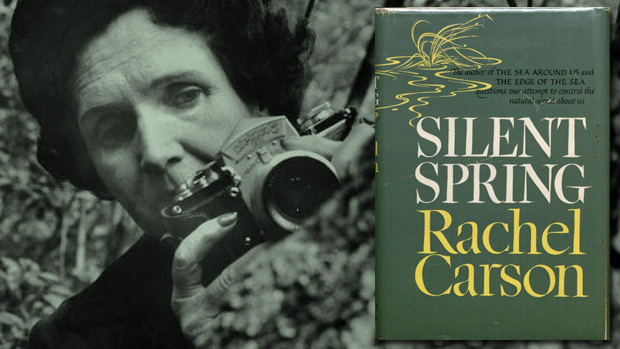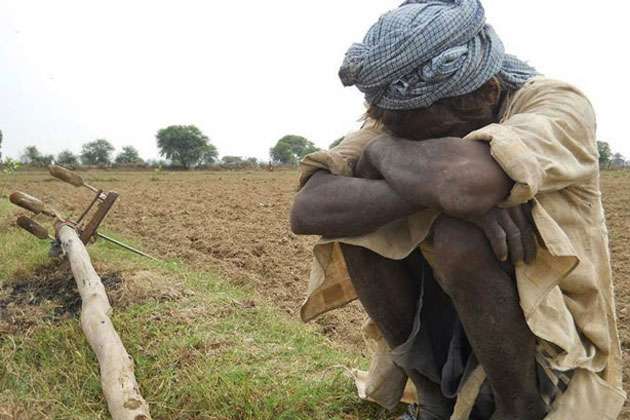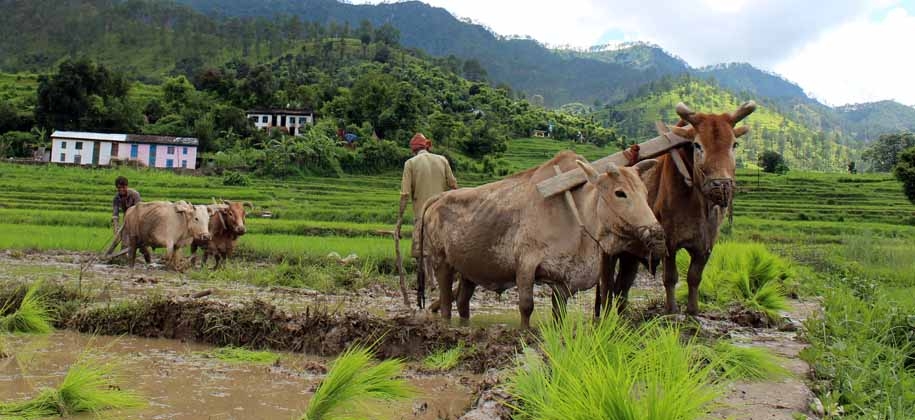FROM THE BOOKSHELF

Excessive use of chemicals and insecticides in agriculture not only degrade land and water resources but adversely impact human health too. With inadequate attention being paid to alternatives in agriculture a book like Silent Spring continues to have its relevance even after many years of its publication.
Mohammad Zafar is working with the science team of Azim Premji Foundation, Uttarkashi, Uttarakhand, India.
In 1960s a book changed the dimension of thinking about the use of insecticides, pesticides and other hazardous chemical based products. This book revealed several examples of how these chemicals are destroying not only lakes, ponds, hills, forests but also affecting humans and other animals adversely. Silent Spring, written by a zoology scholar Rachel Carson who worked as marine biologist and naturalist, shows us a way to think about the other sides of the issues. In this manner Silent Spring is a revolutionary book which gives us concrete examples of degradation of natural resources by those products which we think so important to save our crops & economy.
In 1962, the book was published and it received overwhelming responses from people. But on the other hand the author also faced criticism from chemical industrialists and policy makers who blamed her claiming that her points are hypothetical and exaggerated. But the book gave a chance to explore the realities and later it was found that Rachel was right in her arguments. Now we all know about the harmful effects of DDT and such chemicals which once seemed to be path-breaking discoveries that would save crops, plants and food from been infected by insects.

Poison encapsulated in life
Rachel started her arguments by a hypothetical situation where the spring came silently. There was no chirruping of birds, caterpillars were not crawling on the leaves, lakes and rivers were badly poisoned by the use of insecticides and pesticides. Then she said that it can be a reality in the future. After giving details of the structures of insecticides, their history and emergence she points out how different cities and villages faced problems after the mass eradication of insects. In many cities of the US and Europe policy makers blindly poured and sprayed insecticides through the use of planes and promoted the use of insecticides. Subsequently several cases came into light wherein people faced health problems and even some even died because of insecticidal pollution. She gave chapter wise focus on all issues related to the use of insecticides and pollution of all natural resources such as plants, water and soil.
In different chapters she gave facts and data on the harmful effects of insecticides. In a chapter entitled ‚Elixirs of Death‛ she gave information about their production and emergence and called them children of the Second World War. Most of the insecticides are actually by- products of the world war where scientists working to produce killing chemicals found the effects of the chemicals on insects in tests. After the war there were concerns regarding the use of such chemicals but manufactures got a welcome sign from the governments and scientists as these products were shown as panacea against insecticidal effect and loss of food crop in agricultural production. Scientists gave certificates on the harmfulness of the products and policy makers welcomed the use of these chemicals at mass scale.
She gives details of the effects of chemicals on land, water, underground soil, air, food vegetables and on the human body too in various chapters of the book. She provides multiple facts and information to establish the fact that policy makers sometimes behave in cruel way to justify their decisions and open the doors for the degrading of the environment. In another interesting chapter entitled ‚Earth’s green mantle‛ she gives an example of killing important beetles and other insects and plants too which were beneficial to us. Then she talked about the pollution of rivers by insecticides and how it affects the whole biodiversity of the rivers.
In Gypsy moth’s case planes rained insecticides form the sky without any hesitation and this caused several deaths, illnesss and infections to humans and other animals too. Blind use of insecticides eradicated several useful insects which helped in the control of other harmful insects in the natural food web. She talks about biological magnification of the DDT and other insecticides, death of birds, fishes, emergence of new chemicals by the natural process in the presence of sunlight. then in a chapter called ‚Nature fights back‛ she gives examples of how several mosquitoes and insects have become resistant to chemicals like DDT and that has created more problems for us because we enrolled ourselves in a continuous race where we will make super chemicals and insects will become super resistant and the cost would have to be then paid by our future generations. At the end she gives lots of examples of other ways of insect control and crop protection on which scientists are working. In one of the examples she explains how scientists used one predator over an insect and controlled its population in a cost lower than the spreading of insecticides.
She also described how a scientists and his team used male sterilization methods for controlling insect population. Chemicals are stored in our body and they are penetrating our cellular windows. There are chances of chromosomal alteration which can go to the future generation where nobody knows what these chemical traces will do. Importantly, she questioned how policy makers just saw few direct effects and ignored the deep impacts of the insecticides. Incidents which she wrote about in the book are clear examples of arrogance of governments and their improper use of power. The blame also comes on chemists and entomologists who have often looked at only one side of the coin. But she suggests that all citizens should be aware of such issues and it’s their right to ask questions on such steps of the government. She described the irresponsible way of spraying DDT and other chemicals over farms, cities and villages as a ruthless use of power by governments, entomologists and policy makers. At the end she warns us about the forthcoming avalanche because of our illogical use of chemicals. She was not just giving problems but at the end compiled reformative measures in the chapter entitled ‚The other Road‛ where she gave examples of works done on alternative efforts to control the insects.
Beyond Silent Spring
The book came out in 1962 and from the very beginning it came in the limelight as it was received as a detailed and thorough work on the hidden effects of insecticides on our world. Rachel also received criticism from the groups who found the book against their blind profit and unjust steps but it was its victory that it opened a debate against insecticides widely. In continuation to the awareness among masses, scientific, journalists and many governments banned the use of DDT and the blind use of chemicals. This was a milestone for a thinker like Rachel. Some can say that Rachel’s points look like that of an activist’s but no one can deny the importance of such questions. But, in contradiction to all these allegations, her book is an important work in the history of science, scientific inquiry and environmentalism. It gave a conservative approach towards nature and a way to look at things critically. She explored the theme of insecticides very deeply and even connected the point with the democratic way of policies and questioned the steps of governments in decision making. Book is a must read for all those who love to explore the other side of the stories. In today’s scenario too, her points are relevant when we see that farmers are blindly using insecticides in unwanted quantitates on plants and s lakes continue facing chemical pollution.
The book continues to have its relevance even in contemporary times. We can still find lots of examples where profit makers, policy makers are busy in the rapid outputs and are ignoring the huge human cost, the future implications and above all the questions on sustainable living. Still the funds and researches are mainly based towards these hazardous products instead of exploring other useful means for agriculture and increasing funds towards the alternative views. We continue to be lacking foresight even today. Rachel Carson’s main argument was not just about the hazards of insecticides but she gave us an insight about raising questions on life. Later, after her death people realized that she was right. US policy program makers understood the hazards of DDT. While there is a widespread awareness about the dire consequences of excessive use of chemicals the search and implementation of alternative strategies must be implemented at a large scale and only this can take us towards a more sustainable and environment friendly future.
This article is published in The New Leam, DECEMBER 2017 Issue( Vol .4 No.30-31) and available in print version. To buy contact us or write at thenewleam@gmail.com
The New Leam has no external source of funding. For retaining its uniqueness, its high quality, its distinctive philosophy we wish to reduce the degree of dependence on corporate funding. We believe that if individuals like you come forward and SUPPORT THIS ENDEAVOR can make the magazine self-reliant in a very innovative way.














